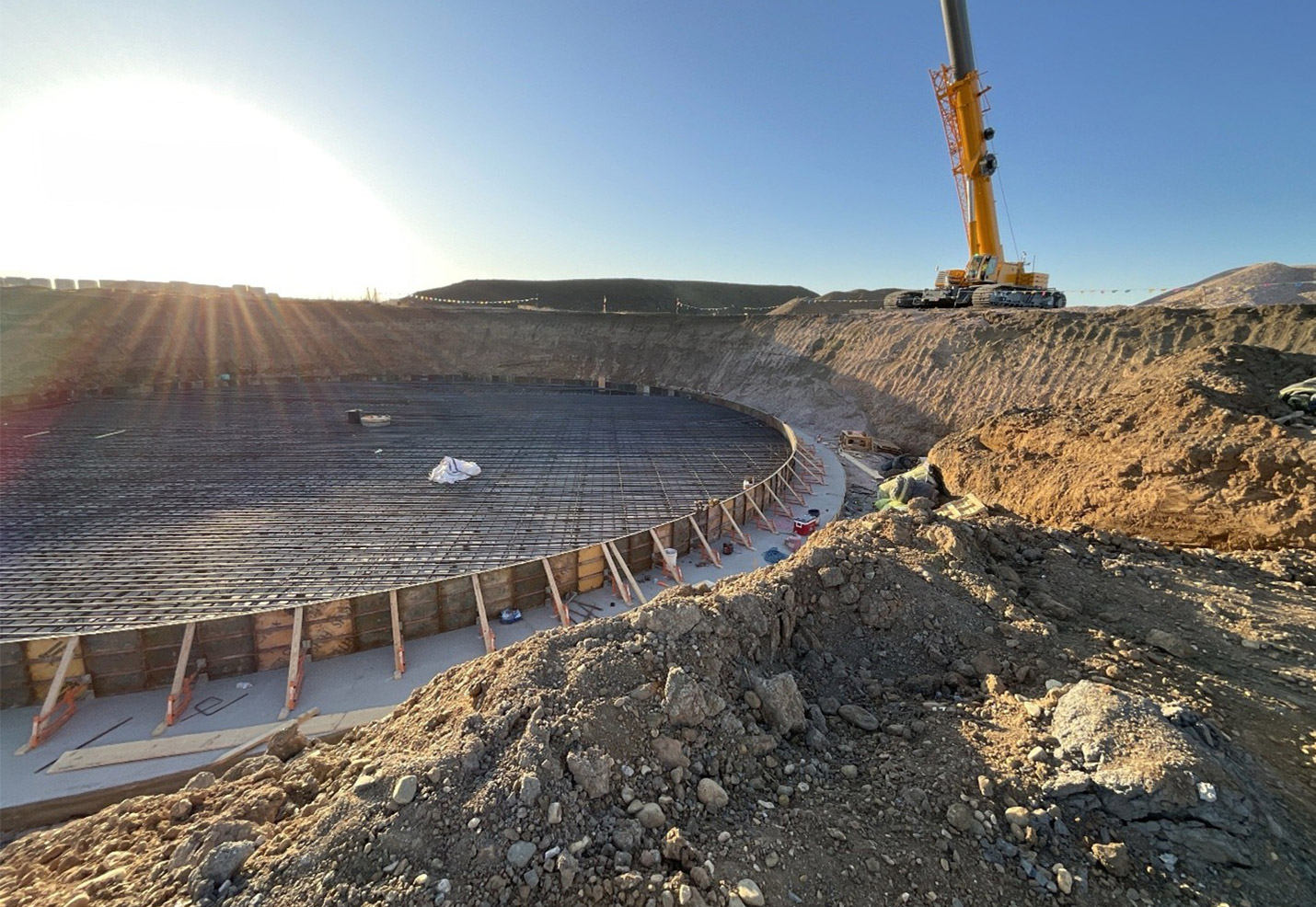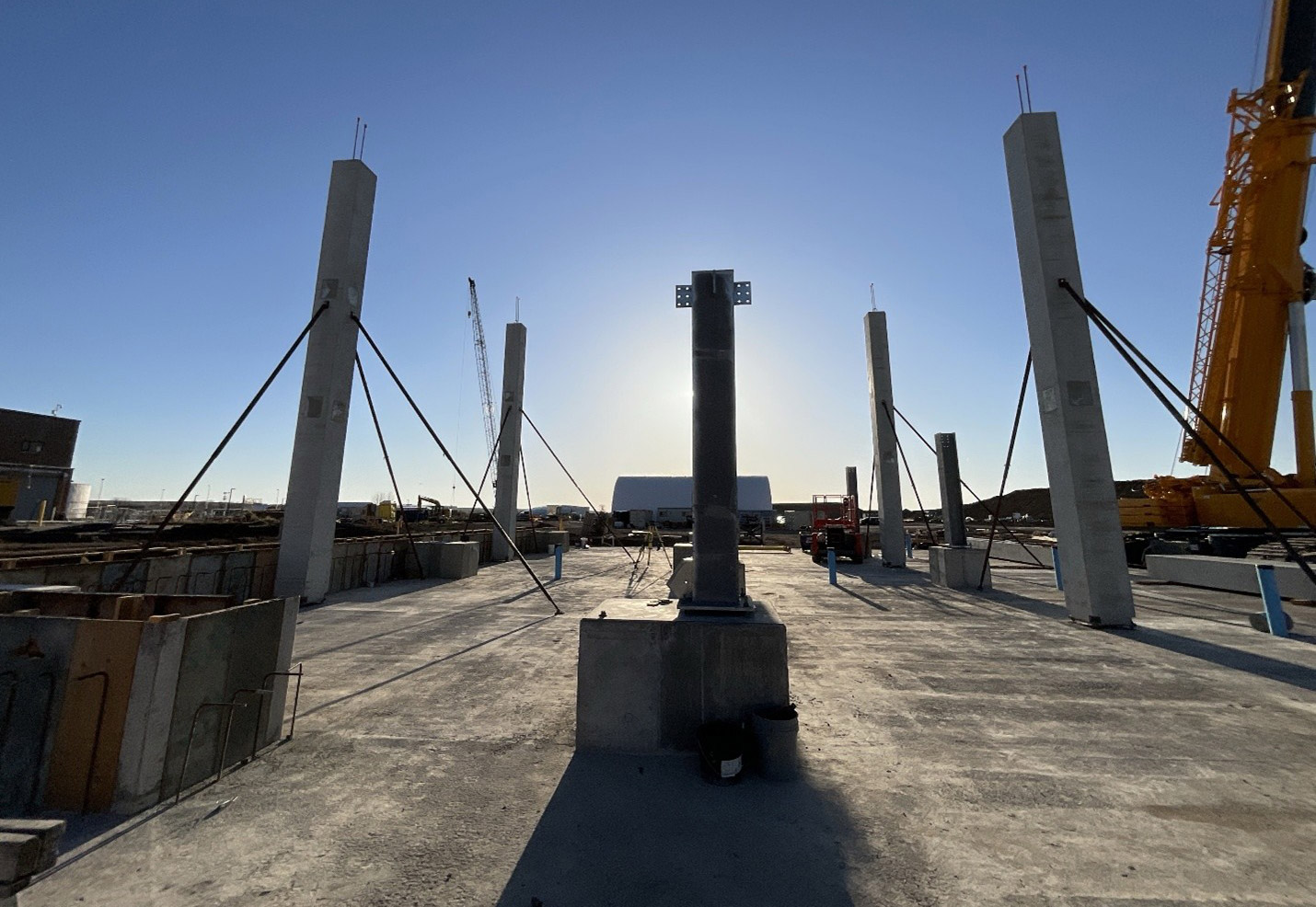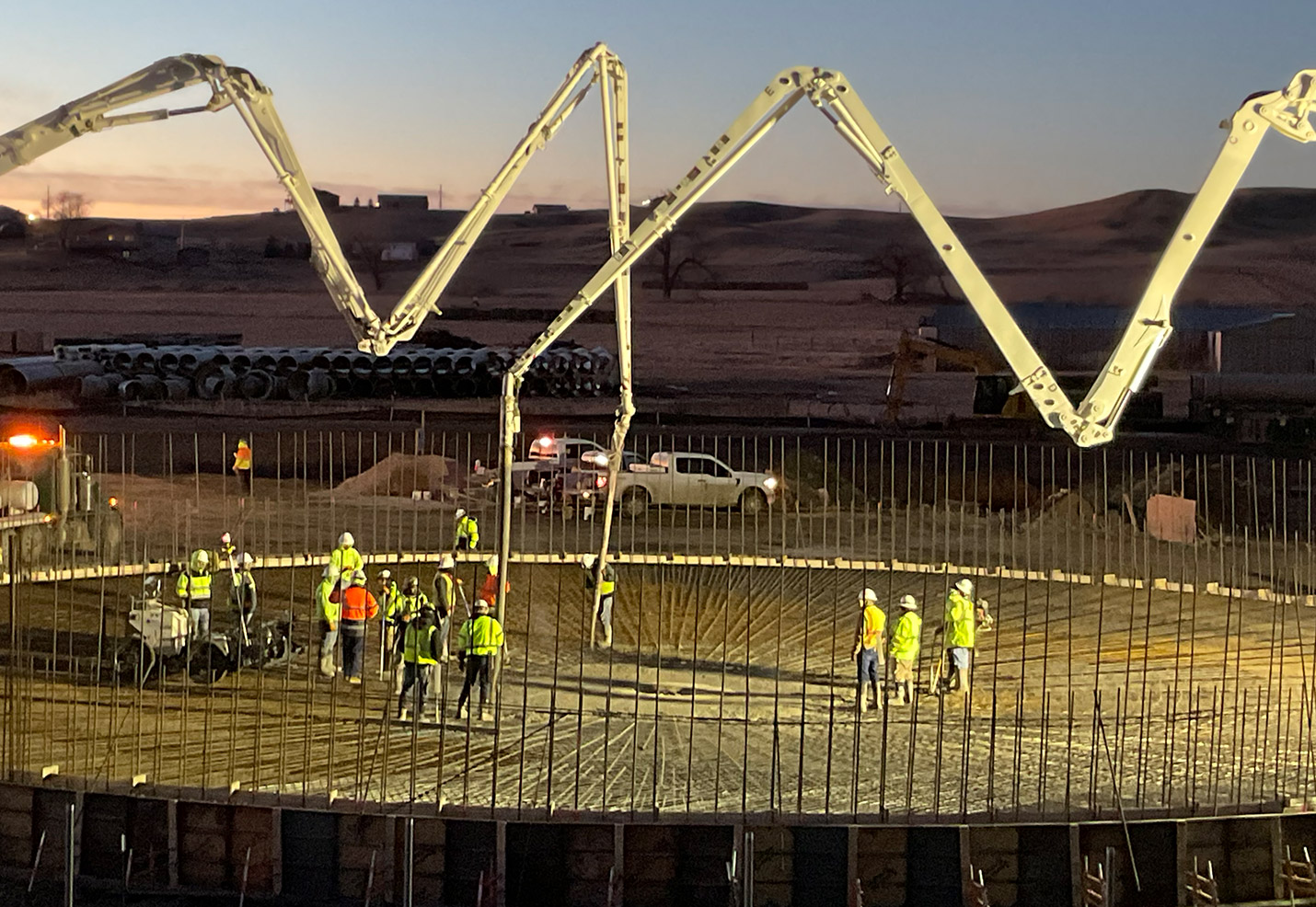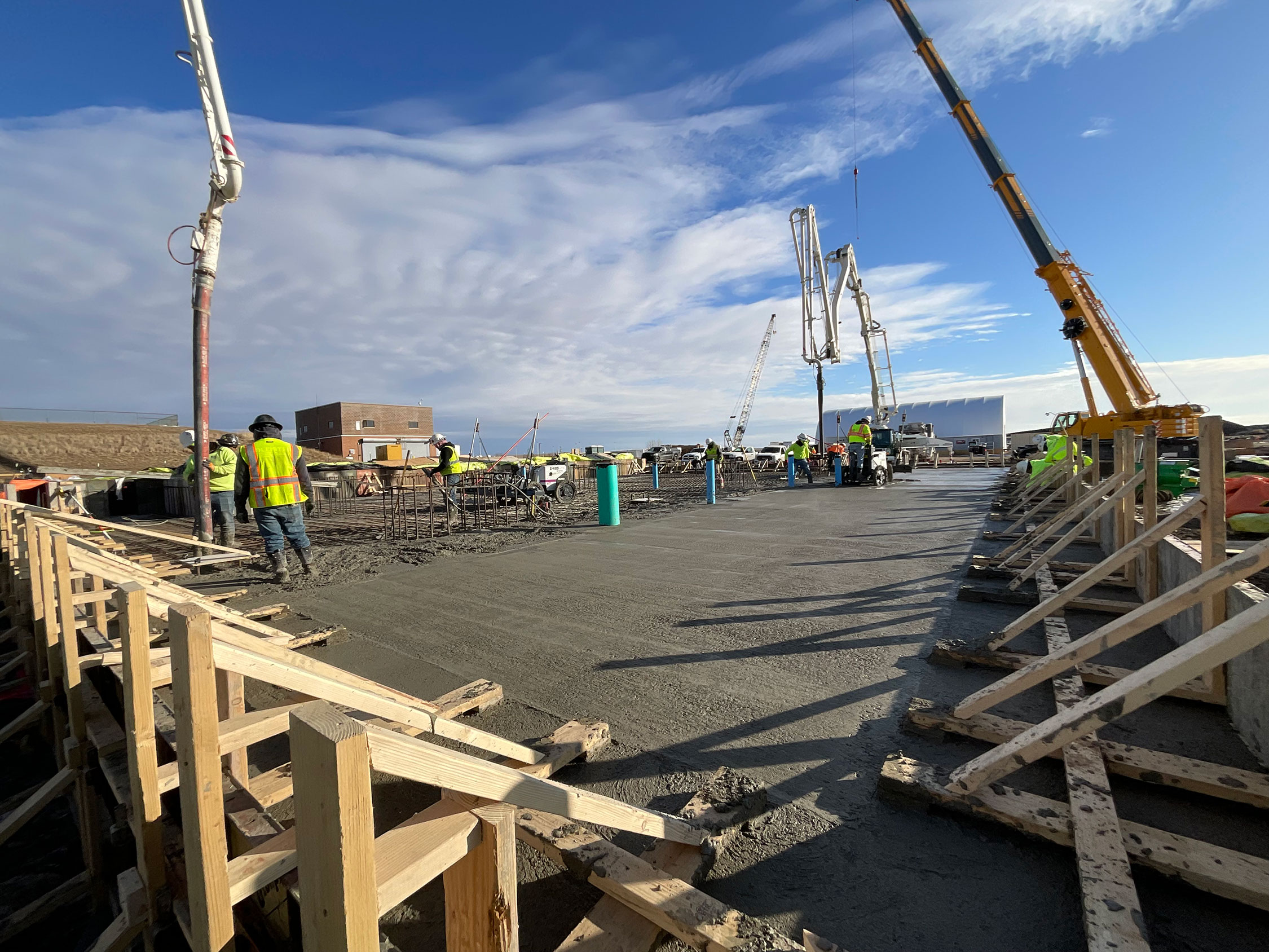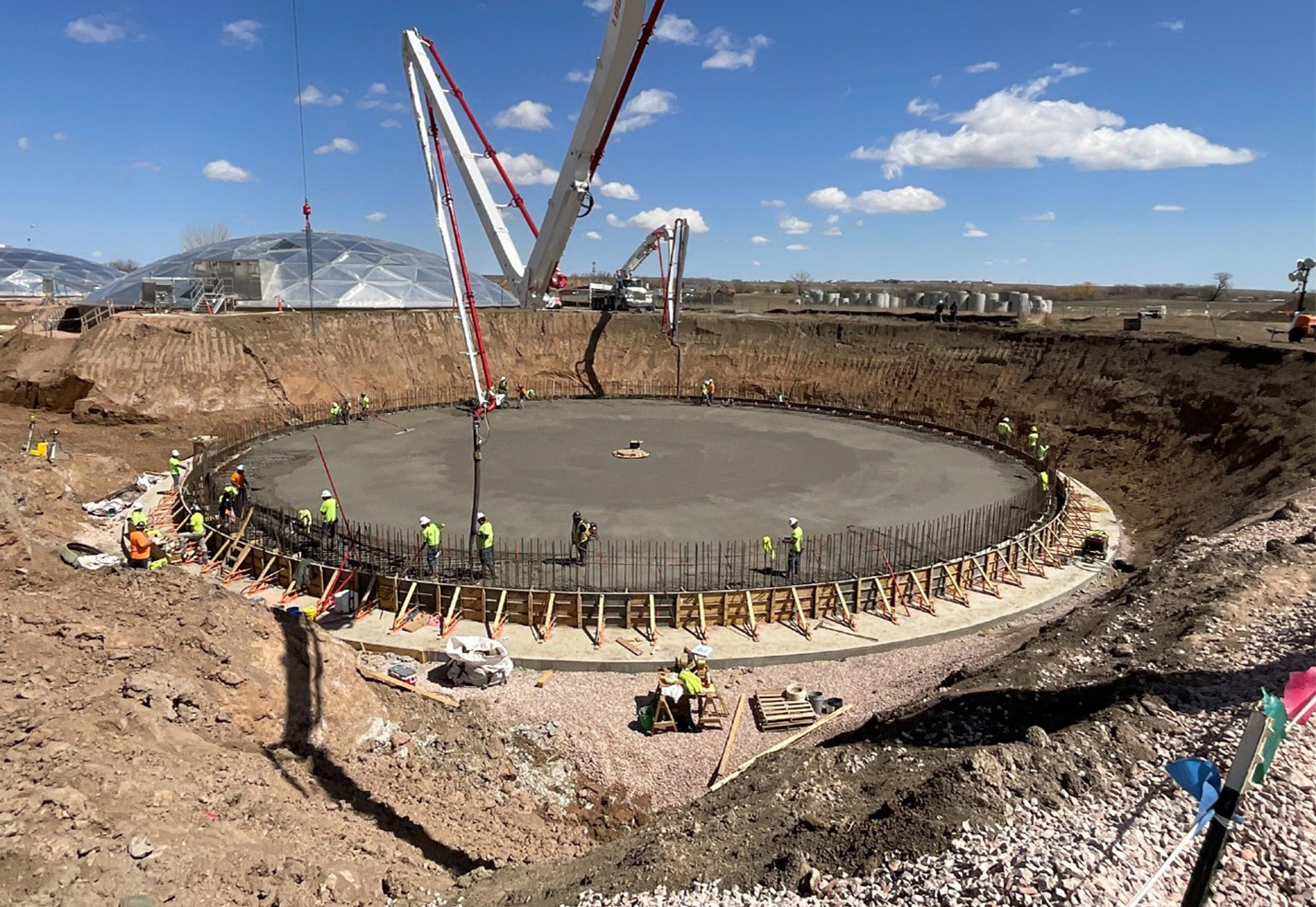Water Reclamation Facility South Plant Improvements
Expanding for the Future
The City's Water Reclamation Facility (WRF) is undergoing a multi-year expansion, with its estimated completion scheduled for winter 2028. This is Rapid City's largest infrastructure project to date and will provide needed services to the community now and in the future.
These improvements will...
- Increase reliability of the system by expanding treatment capacity
- Protect public health by improving the current system
- Save taxpayer dollars by reducing operational costs
- Ensure system compliance with increasing federal and state regulations
- Future-proof the facility by taking into account population growth projections and anticipated regulation changes
- Continue to protect the water quality of Rapid Creek and downstream habitats by implementing reliable and efficient treatment processes
- Support economic growth in the region by providing a water reclamation facility with room for growth
Explore the Facility
The Rapid City Water Reclamation Facility treats wastewater so it can be safely returned to the environment. This facility takes in sewage and treats it through various processes, then releases the treated water into Rapid Creek.
This Pretreatment Building contains machinery that assists in the removal of large debris from wastewater before it is treated. This protects downstream equipment from large objects like rags, sticks, and grit.
The Primary Clarifiers work to separate solids and fats from liquids in wastewater. Settled solids, known as primary sludge, sink to the bottom and are scraped away, while lighter materials like fats and oils float to the surface and are skimmed off.
This facility provides a space for the anaerobic processing of the sludge generated in the treatment of wastewater.
This is a holding tank where sludge is held before the dewatering treatment process.
The Aeration Basins are tanks where air is infused into wastewater to ensure that the microorganisms responsible for the degradation of suspended solids are able to survive and clean the wastewater efficiently.
The Blower Building houses the large industrial blower equipment needed for the Aeration Basins. The Pump Building houses the pumping equipment utilized for recycling and wasting of the activated sludge from the aeration basins.
The Secondary Clarifiers settle the suspended solids (flocs) that have formed during the aeration process. This gravity-driven process causes the flocs to settle out of the wastewater. The settled solids are then either wasted (WAS) to the Solids Holding Tank or recycled (RAS) back to the aeration basins to continue cleaning the incoming wastewater.
After the water is thoroughly cleaned, extra oxygen is added back into it through post-aeration to ensure it has enough dissolved oxygen (D.O.) to support aquatic life in the creek. As a final safeguard, the water then enters a specialized building where ultra-violet (UV) rays kill any remaining bacteria in it such as E.coli, making it safe for the environment.
The Dewatering Building processes sludge from the Solids Holding Tank, separating the solids from the liquid. The solids are sent to the landfill, and the liquids are recycled back into the treatment process.
This is a dedicated area where vacuum trucks, the trucks that carry the solid and liquid waste gathered from storm drain cleaning, can empty their contents onto a dewatering pad. This allows the solids to dry out before they are disposed of.
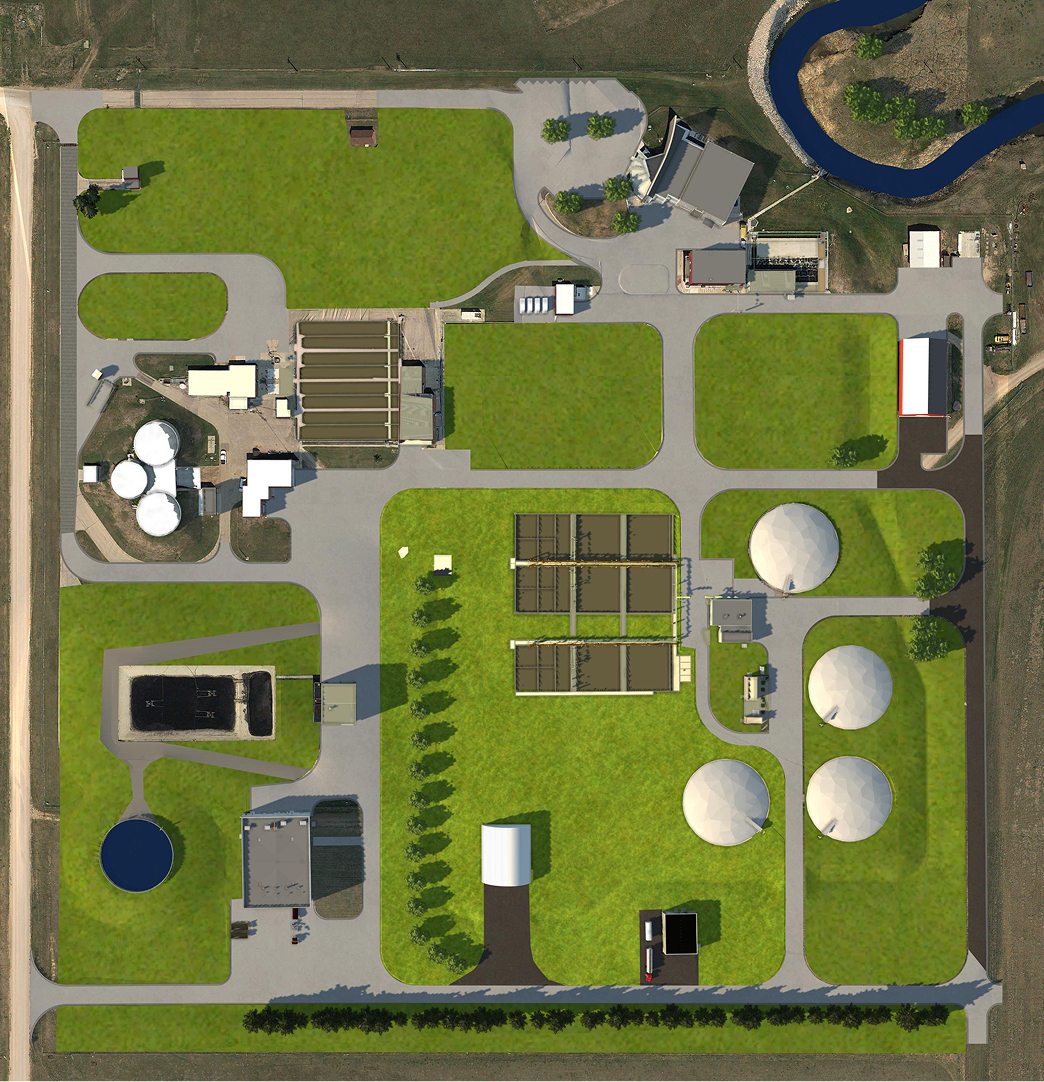
Construction Timeline
The WRF will be upgraded in stages. Construction began in 2024 and is expected to be completed in 2028. Stage 1 includes the construction of new South Plant facilities. Stage 2 includes improvements to the existing South Plant facilities. Stage 3 includes demolition of North Plant facilities.

2024 to 2028 - Stage 1: Construction of New South Plant Facilities
Includes the expansion of the existing activated sludge treatment train (South Plant), which includes new facility structures.
2025 to 2028 - Stage 2: Improvements to Existing South Plant Facilities
Includes improvements to the existing facilities such as modifications to Aeration Basins 1 and 2, Secondary Clarifiers 1 and 2, and the existing Blower/Pump Building.
2026 to 2028 - Stage 3: Demolition of North Plant Facilities
Includes the demolition of North Plant Treatment facilities and improvements to Primary Clarifiers 1 and 2 and electrical modifications to existing structures.
View our Progress
We've come a long way since 2024! Swipe or scroll to view our progress.
-
April 2025
The mat slab rebar installation for Clarifier 3 is complete. Clarifier 3 is a secondary clarifier, meaning it separates biosolids from transparent or purified water. This clarifier is scheduled to be completed in 2026. -
April 2025
Support platforms and lower platform construction have been poured for the Dewatering Building. The Dewatering Building processes sludge from wastewater, separating it into liquids and solids. The Dewatering Building is scheduled for completion in 2026. -
February 2025
The Solids Holding Tank mat slab is placed. The holding tank holds sludge before processing. It is scheduled for completion in 2027. -
January 2025
The Dewatering Building mat slab concrete was poured. The Dewatering building processes sludge from the Solids Holding Tank and is scheduled for completion in 2027. -
January 2025
The excavation for the Secondary Clarifiers 3 and 4 and the Return-Activated Sludge/Waste-Activated Sludge (RAS/WAS) Pump Building. The Secondary Clarifiers are where the final treatment process for disinfection occurs. Scheduled for completion in 2027.
Looking for more? View our Project History Timeline.
Project Cost & Funding
The total project cost for the WRF South Plant Improvements is $207.3 million. The project is fully funded, including contingencies for change orders and value-added work. The City of Rapid City received the largest American Rescue Plan Act (ARPA) grant offered, totaling $52.8 million.
- $136.5M State Revolving Fund Loans (66%)
- $18M Water Reclamation Enterprise Funds (9%)
- $52.8M Grant Money (25%)


